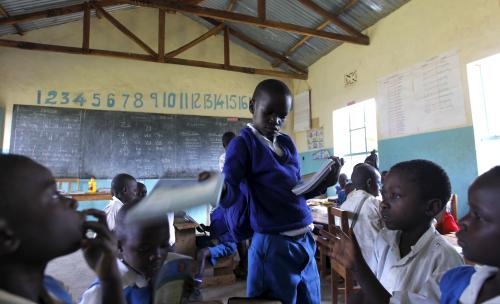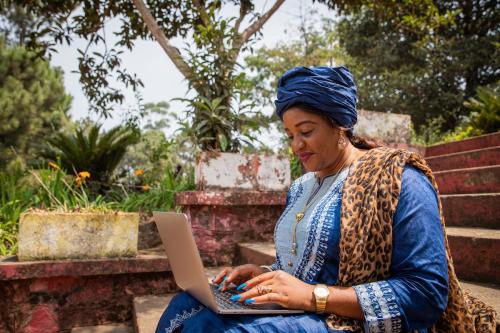As we celebrate World Statistics Day, data is impacting our lives more and more, not only in how we manage our private lives but increasingly in how governments operate. A growing number of countries, especially in Asia, are using data to design policies, manage operations, and respond to crises. It has become the lifeblood of evidence-based policymaking. Given this pivotal role, having accurate, high-quality, trustworthy data is more crucial than ever. The unprecedented COVID-19 pandemic underscores the importance of getting credible and reliable data. It is an essential tool for designing responses, allocating resources, and measuring effectiveness of interventions.
According to World Data Lab’s World Poverty Clock, global poverty by the end of 2020 could increase to of the world’s population. In fact, the pandemic has reversed recent decreases in poverty. Instead of reducing poverty by 20 million people, the pandemic is pushing at least another 60 million people into extreme poverty. Hence, special attention must be given to the poor as they are the most vulnerable to the adverse socioeconomic impact of COVID-19.
Granular poverty statistics are paramount to facilitate more efficient, targeted interventions to address the various needs of the different segments of the poor. However, conventional sources of poverty data, such as surveys of household income and expenditures, do not provide sufficient granular data, nor are they timely enough to be useful for policymakers. We need to look for alternative sources to supplement and integrate with traditional sources.
Digital technology has created a tidal wave of data, which the Asian Development Bank (ADB), together with its partners, is starting to exploit for the design of development projects. These innovative data sources can potentially address the limitations of traditional sources of poverty data, such as the issue of granularity. Inspired by a method proposed by Stanford University researchers, researchers from the ADB examined the feasibility of integrating household surveys and satellite imagery, and used machine learning algorithms to predict the spatial distribution of poverty.
Research results are now available for a joint project between officials in the Philippines, Thailand, and the World Data Lab. These two countries were chosen for their existing initiatives to combine household survey data with census data to produce more granular yet reliable poverty estimates. These initiatives provided adequate data to train machine-learning algorithms. Additionally, the Philippines and Thailand have slightly different poverty profiles, with the latter showing significantly lower poverty rates (Figure 1). This allowed us to examine how poverty distribution might affect granular poverty estimation that incorporates data from satellite imagery.
The research team trained the algorithm to predict the intensity of night lights based on daytime satellite imagery, as studies show that nighttime light intensity is a reasonable proxy for the level of economic activity. The goal was to get a model that can recognize features in daytime satellite imagery—such as street patterns, building density, and roofs—that lead to high levels of luminosity at night. The researchers then used aggregates of those features to analyze their relationship with poverty rates at those levels, which represent the most granular level of our input data. When a relationship was established, it was possible to predict the prevalence of poverty for an area as small as 4 kilometers by 4 kilometers.
Figure 1. Modeling Thailand’s poverty from space
 Source: ADB. Mapping Poverty through Data Integration and Artificial Intelligence; September 2020
Source: ADB. Mapping Poverty through Data Integration and Artificial Intelligence; September 2020
The results are encouraging. After calibration, the predicted poverty estimates, produced by the machine-learning algorithms applied on publicly accessible satellite imagery, are not only aligned with government published estimates, but were also more granular. Better still, further gains in the granularity of statistics may be achieved if higher resolution imagery, such as those commercially sourced, is used in future studies.
Studies such as this are part of development organizations’ efforts to strengthen national statistical systems to meet increasing data demands for effective policymaking and monitoring of development goals and targets. However, it is not enough to build the capacity of data compilers to integrate traditional sources with innovative technology. Nor is it enough to have trustworthy and reliable data. It is also important to ensure that data is used appropriately and communicated effectively.
The COVID-19 pandemic may have turned the poverty clock back closer to levels we had when the SDGs were first launched five years ago. Now we have 10 years until the SDG reckoning. Accurate, timely, trustworthy, and granular data can help us move forward and traverse the path of socioeconomic recovery, as we draw closer to our goal of eradicating poverty and ensuring that nobody will be left behind.
Note: This blog builds on an ADB report Mapping Poverty through Data Integration and Artificial Intelligence: A Special Supplement of the Key Indicators for Asia and the Pacific, developed jointly with World Data Lab. Its results were presented at a global webinar on Harnessing Data in the Digital Age for Poverty Reduction on October 14, 2020.









Commentary
Asia’s data frontier—Modeling poverty from space
October 20, 2020